Digital Frontier
Header
Main
CG MAKING
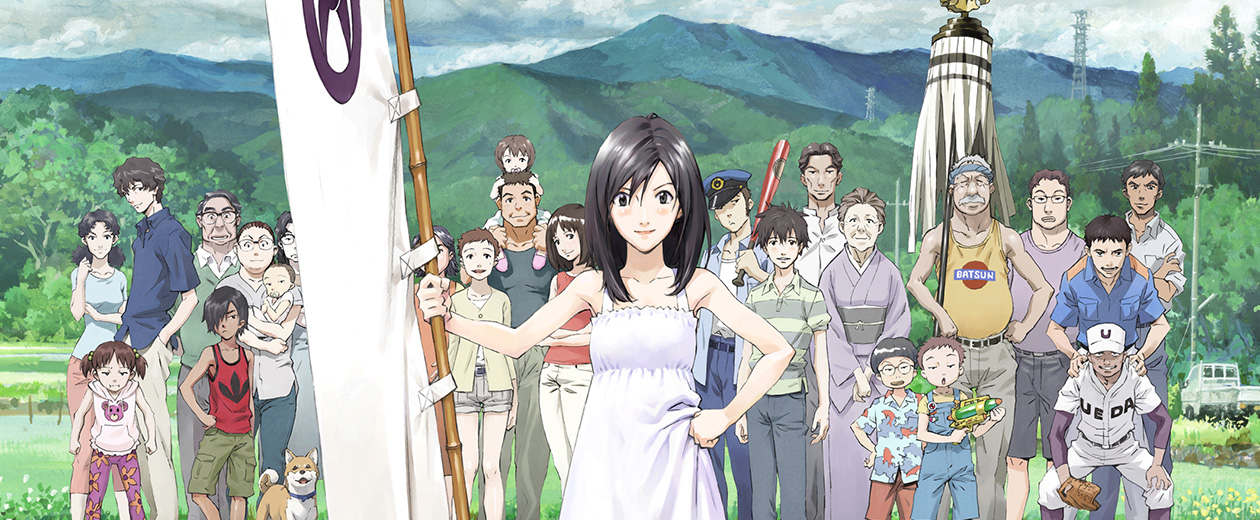
Summer Wars
August 2015 [CG]
INTRODUCTION
The Making of the movie “Summer Wars”
Director Hosoda speaks about CG movie
On November 13th, 2009 a conference was held at Nihon University College of Art. Speakers were film director Mamoru Hosoda, CG producer Yusaku Toyoshima, and CG director Ryo Horibe.
Summary
“Summer Wars” was launched in theatres on Aug. 1st, 2009. Within a month over 1 million tickets were sold. On March 2010, DVD was released which was followed by TV broadcast on Nippon Television Network 5 months later. The film, which combines celluloid and 3DCG animation, takes place in present Japan where traditional life interlaces with cyberspace.
How it all started
How it all started
I have been working with Digital Frontier for over 10 years. In year 2000 we worked together on 3D film called “Dejimon Adventure 3D Dejimon Grand Prix”, which was put on at Sanrio Puroland. From that on, I grew interest in CG animation and full CG movies. Until now, Digital Frontier have been creating number of CG works for TV and film so I was hoping that I could work with Digital Frontier again.
Merging 2D anime and 3DCG
In “Summer Wars” CG is used to create the background, crowd, avatar and the giant Love Machine in cyberspace OZ. CG is also utilized for PC screens in the story. The total length of the CG part is about 30 minutes. In the usual production process, we first create the conte, then the layout and design. Then we move onto modeling and texturing. We next proceed to motion layout and we place the character in the scene based on the conte.
When this is done we move onto motion, which we set up movements for the characters. For this we did everything by hand. Finally, we do lighting and rendering which you can think of as a camera work in filming. When CG movie is created we combine with the rest of the film. In animation, if it’s a full CG film we edit; else, we composite the data with celluloid.
The largest difference between celluloid anime and CG is the texture. In order to match the texture of the two, we use “toon rendering” so that it looks like if it is all done in celluloid.
Making of the movie
Horibe, what did you do after you received Hosoda Director’s request?
Horibe, what did you do after you received Hosoda Director’s request?
To be favored by female users I wanted to make OZ fashionable. We went to fashionable stores in Daikanyama and researched their shelf layout and ad designs for inspiration.
Avatar
I think Digital Frontier did a great job creating such detail. Since there are billion users in OZ, I also needed variations.
120 creators at Digital Frontier worked on 300 avatars. Movements are applied by hand.
This produced unique designs and variations in avatars. There is so much detail in scenes that are only 1-2 seconds as well as scenes blocked by the background.
I included a lot of information in area of focus. At first glance it looks simple so less confusing and more pleasing to the viewers’ eyes. For example, every object on the bookshelf is modeled thus the scene required a lot of time and effort.
I also needed many avatars to create the Love Machine. In the story, Love Machine is to be composed of 400 million avatars so we used particle system to create the scene. After several trials I think we succeeded to express its large scale.
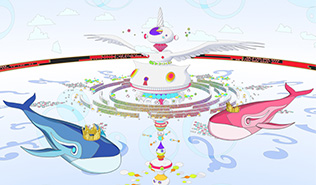
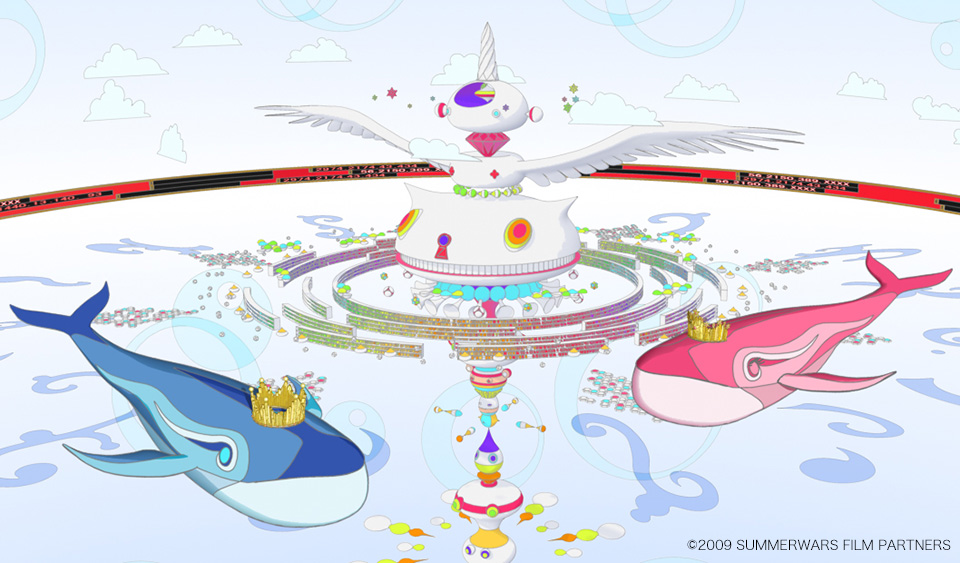
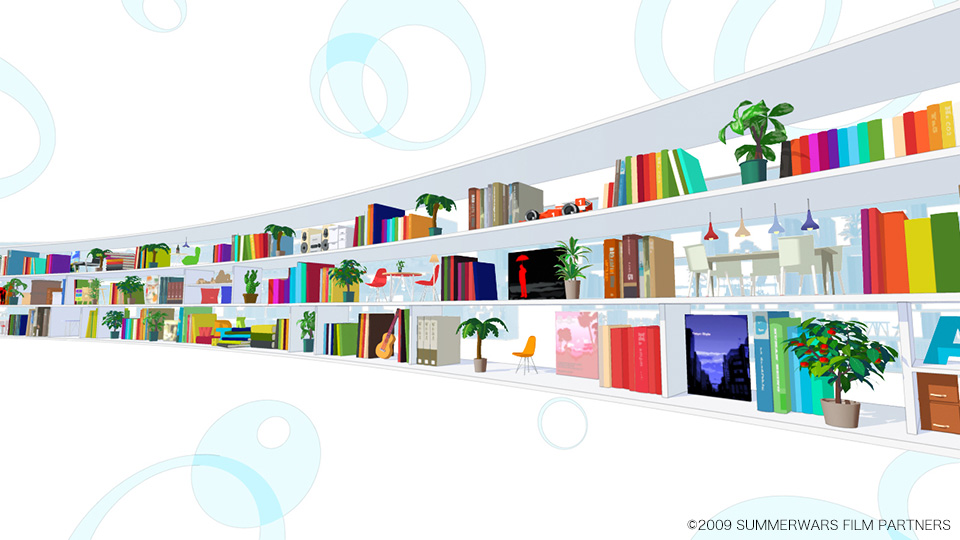


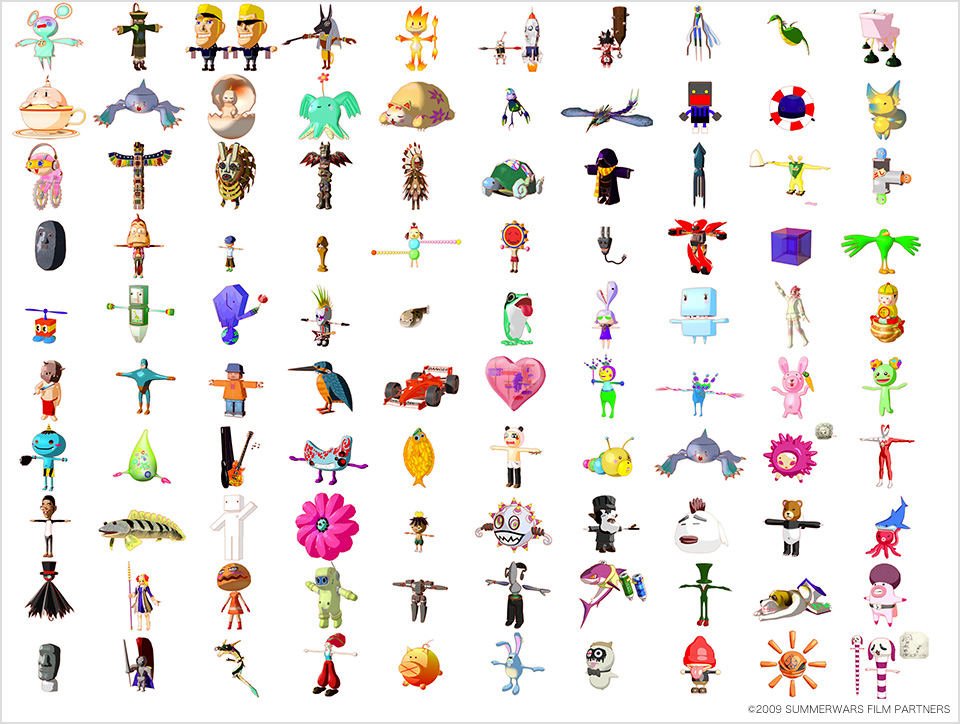
TOYO-
SHIMA
Hosoda san, you brought the idea of producing the film. Could you please explain your first thoughts and goal?